|
|
|
The basic cause of a spin is a difference in lift and drag between the two wings with the airplane operating in stalled flight, although complex aerodynamic forces and moments may be present. When yawing or rolling moments are introduced with the conventional modern airplane at angles of attack above the critical angle, a self-sustained rolling-yawing motion and autorotation is the result. The primary control for spin recovery is the rudder, which is used opposite the direction of rotation to stop the rotation. Since the spin occurs only at angles of attack above the critical angle of attack, recovery is then completed by reducing the angle of attack with elevator control. The load factor during spins will vary with the spin characteristics of each aircraft, but is rarely found to be very much above one G.
It must be appreciated that the certification of normal category airplanes, which are placarded against intentional spins, requires only that it be shown that the airplane can be recovered from a one turn spin by conventional means in no more than one additional turn. The greatest danger of intentional spins in this type of aircraft is that after one turn the pilot is entering an unknown condition, from which recovery may or may not be possible.
It is important to note that many aircraft specifically prohibit intentional spins. This is often due to the size of the rudder. If it is too small to stop the rotation, it becomes harder to recover from the stall. In the event that this happens, application of full power can put enough air flow across the rudder to allow the rotation to stop. It is, however, best not to even tempt fate.
Most aircraft, within their normal envelope of operations are purposefully nose heavy to help the airplane to fly nose down so that as the speed builds up and the rotation stops the airplane can begin to fly again. If the airplane is loaded too far aft, the tendency is for the nose to not drop resulting in a flat spin. It is usually impossible to recover from a flat spin.
Wing flaps are the most common of the many high lift devices which have been developed over the years for various types of airfoils. Wing flaps, by changing the shape, area, and/or camber of the wing, also change the critical angle of attack, thereby delaying the stall and allowing operation at slower airspeeds. In addition they allow descent at steeper angles without a gain in airspeed and often at a lower airspeed. A useful characteristic, particularly for operation into short and/or soft fields with obstacles near the desired landing point.
The more common types of flaps are:
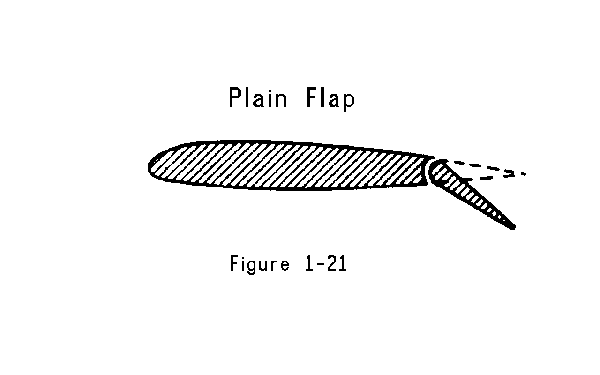
PLAIN FLAP A simple means of changing the camber, or curve of the wing. A higher camber produces the same amount of lift at a lower airspeed.
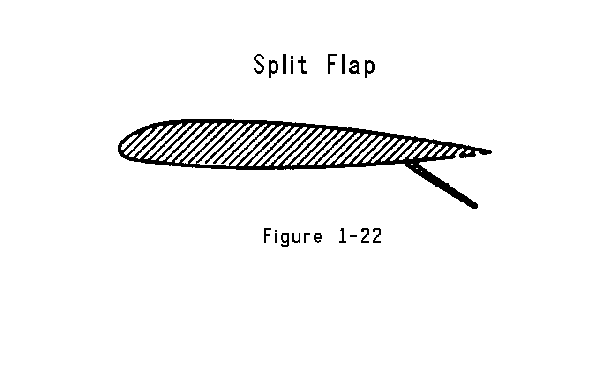
SPLIT FLAP This also produces the same amount of lift at a lower airspeed due to an increase in camber, but because of the low pressure area created behind the extended flap it also creates more drag than the plain flap.

FOWLER FLAP The fowler flap which travels both aft and down on tracks not only increases the camber of the wing, but also increases the effective wing area. This combination allows slower, and more stable flight than any other flap.
Torque is a force or combination of forces that produce, or tend to produce a twisting or rotating motion. There are four elements which may cause this twisting or rotating motion around at least one of the airplane’s axes. These are:
1. TORQUE REACTION - Newton’s Third Law Of Motion states that for every action there is an equal and opposite reaction. The propellers in most U.S. constructed airplanes rotate clockwise when viewed from the rear. This rotation sets up a torque force, and due to the above stated law the airplane then tends to turn counter clockwise.

Most airplanes are constructed with a greater angle of incidence on the left wing than on the right, creating slightly more lift, (and consequently more drag), on the left wing to overcome this rolling tendency in cruise flight. Trim tabs may help to overcome it in other conditions of flight. Because of the increased drag on the left wing the airplane will tend to yaw left, and offset of the vertical fin may be used to counteract this force in cruise flight.
2. SLIPSTREAM CORKSCREW EFFECT - As shown in the slipstream graphic, the rotating propeller induces a slipstream swirl which causes a change in flow direction at the vertical tail. As the corkscrew of the slipstream passes the tail surfaces it causes a rolling moment to the right, and at the same time the corkscrew passing the vertical tail causes a yawing moment to the left. At high propeller speeds and low forward airspeeds the corkscrew effect is very tight and most effective. As forward speed increases the corkscrew elongates and has considerably less effect.
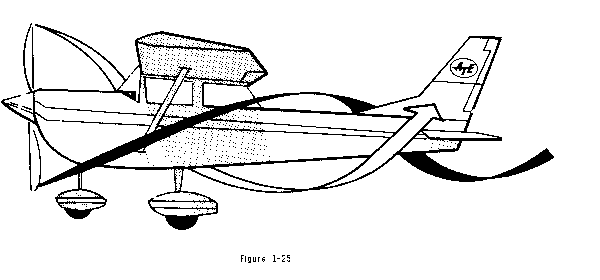
Since the rolling moment caused by the corkscrew effect is to the right and the yawing moment caused by torque reaction is to the left they will, to some degree, tend to cancel one another. However, since they change greatly under differing flight conditions, both must be compensated for by the pilot.
3. GYROSCOPIC ACTION OF THE PROPELLER The rotating propeller is an excellent gyro and has the same properties as any gyro. Anytime a force is applied to deflect the propeller from its plane of rotation the effects of precession will be apparent. The resultant force will appear 90 degrees ahead, in the plane of rotation, and will cause a rolling moment, a pitching moment, or a combination of both depending on where the initial force was applied.
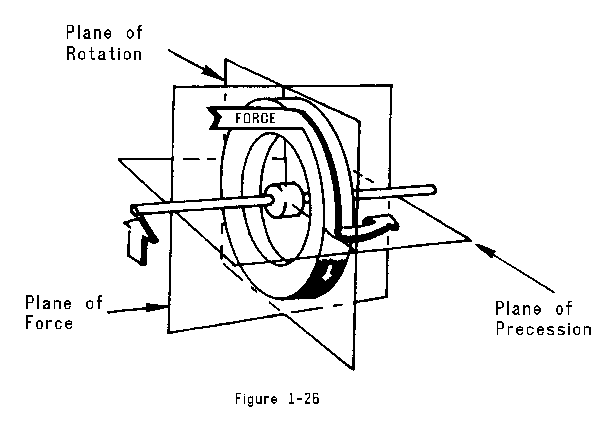
This principle is most prominent in the tail wheel type airplane when the tail is being lifted during the takeoff roll, but it will be apparent anytime that a deflecting force is applied to the plane of rotation. It must be compensated for by the proper application of rudder and elevator controls.
4. ASYMMETRIC LOADING (P FACTOR) Asymmetric loading is caused by the resultant velocity of the propeller in its plane of rotation and the velocity of the air through the propeller disc. With the airplane at positive angles of attack, the right, or down swinging blade (as seen from the rear) has a higher angle of attack, and therefore greater thrust, than the left, or up swinging blade.
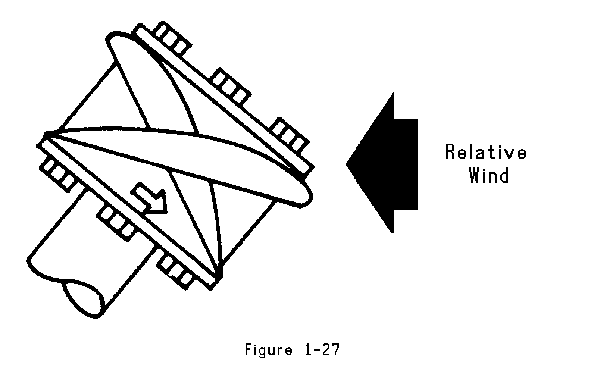
Since the propeller blades are in themselves airfoils increased velocity results in increased lift, and the increased lift on the right blade tends to yaw the airplane to the left.